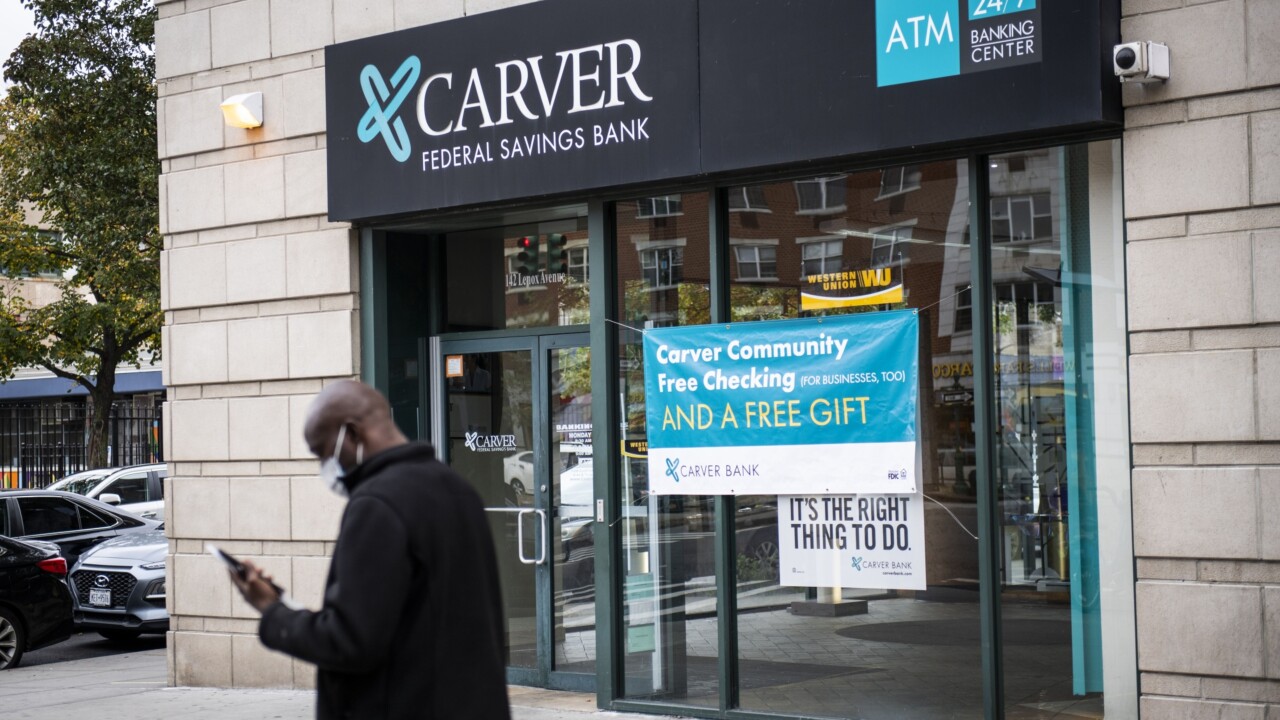Doug Bystry recalls stumbling across a health food bar that specialized in buffalo-based dishes.
Native American Natural Foods, based on a reservation in South Dakota, had struggled to get a loan despite approaching a number of banks.
Bystry, president and chief executive of Clearinghouse CDFI in Lake Forest, Calif., decided to get involved. It took some convincing, but the bank in total lent the business $750,000.
While Clearinghouse has expanded its outreach in the last year to offer loans to all tribes west of the Mississippi River, Bystry said it hasn't been easy getting everyone comfortable with the concept. "I've had some of my board members and people that I respect immensely basically express concern about additional risk," he said.
"For us, it's an additional risk but it's one that we feel is central to our mission" as a community development financial institution, Bystry said. "A strong majority of [our] shareholders support the efforts we're doing. … We just feel like maybe we can help."
A number of mainstream banks also actively lend to Native American groups, including Bank of America, Wells Fargo, JPMorgan Chase and U.S. Bancorp. A big reason for banks' reshaped perspective over the years is the casino industry, industry experts said.
Banks "were very, very hesitant to get involved" with Native American enterprises until the gaming industry took off, said Kate Spilde, a professor at San Diego State University who has worked with tribes for more than 20 years.
Banks "are less fearful" of lending to Native Americans now, Spilde said. Bankers, meanwhile, "are human, and they see that the money they lend is really changing lives."
Legislation also helped bridge the gap between bankers and tribes, industry experts said.
The Indian Gaming Regulatory Act of 1998 allowed tribes to "invest in gambling enterprises," while using returns to invest in areas such as education, the Office of the Comptroller of the Currency noted in a recent report. Twelve years later, the Tribal State Gaming Compact allowed 61 tribes to open casinos, while providing banks the "legal assurance they felt they needed in order to enter that market," Spilde said.
"They just came rushing in to lend," Spilde said.
Legislative intervention "created some clarity around Native Americans' ability to engage in gaming," said Dawson Her Many Horses, a relationship manager at Bank of America Merrill Lynch and a member of South Dakota's Rosewood Sioux tribe. As part of his company's middle-market gaming group, Her Many Horses works with bankers and tribes in areas such as gaming, governmental financing and economic development.
Working with tribes is "an opportunity to do more financing, but it's also an opportunity to help our Native American clients," Her Many Horses said. Having multiple banks allows the lenders to divvy up the debt and, by extension, the risk.
Financing has also become more competitive, Her Many Horses said. Tribes "have more options today than they might have 50 years ago."
The situation isn't sunny on all fronts.
Tribes in rural areas often struggle to access capital, said Dante Desiderio, executive director of the Native American Financial Officers Association.
The OCC echoed that view in its report.
"Although sources providing hard data for commercial activity in Indian Country are scarce, there is plenty of anecdotal evidence pointing to severe shortages in commercial credit," the OCC report said.
"Many lenders are unfamiliar with this market," the report added. "Indian tribes and reservation-based communities exist and operate within a unique legal and governmental framework that can make the enforcement of traditional bank agreements less predictable."
Also, tribes lack control over their land. "The U.S. government has a 'trust responsibility' for Indian assets, including land," the OCC said.
There is enough opportunity to convince bankers to work around those challenges.
KeyCorp, for instance, formed a six-person group in 2005 to work exclusively with Native American communities, said Mike Lettig, the Cleveland company's national executive for Native American financial services and agriculture business. "Banks have been willing to participate in providing access capital … predominantly centered around gaming," he said.
It would be better if more financial firms would get "more involved in developing solutions for the roads, water [and] governmental infrastructure," Lettig said, adding that anywhere from 15 to 20 banks are willing to do business on reservations.
"It's just not enough," Lettig said.
Desiderio, meanwhile, has turned to the federal government for help. Last year, in written testimony before the Senate Committee on Indian Affairs, he
Bystry at Clearinghouse believes the incentive for his group is fulfilling its charge of community development. The group has so far made about $16 million in loans to Native American entities.
Still, it isn't easy to meet that objective.
"This is really hard lending," Bystry said. "The problems are so vast that it's probably easier just to say forget it, but as a [CDFI] that's kind of what motivates us to get up in the morning."





